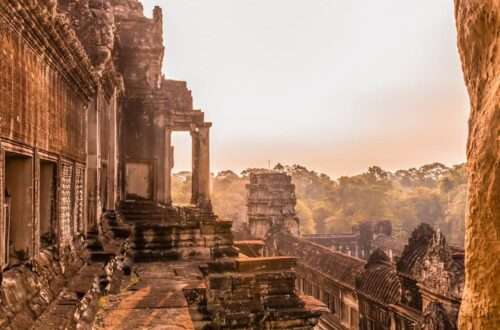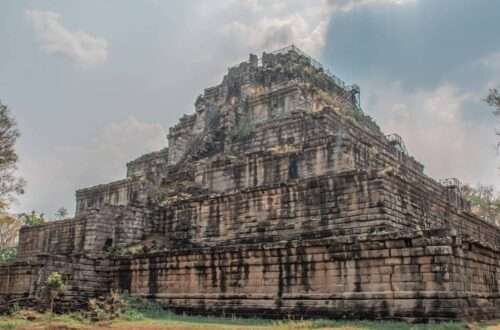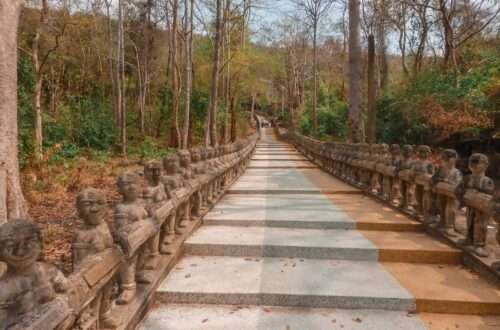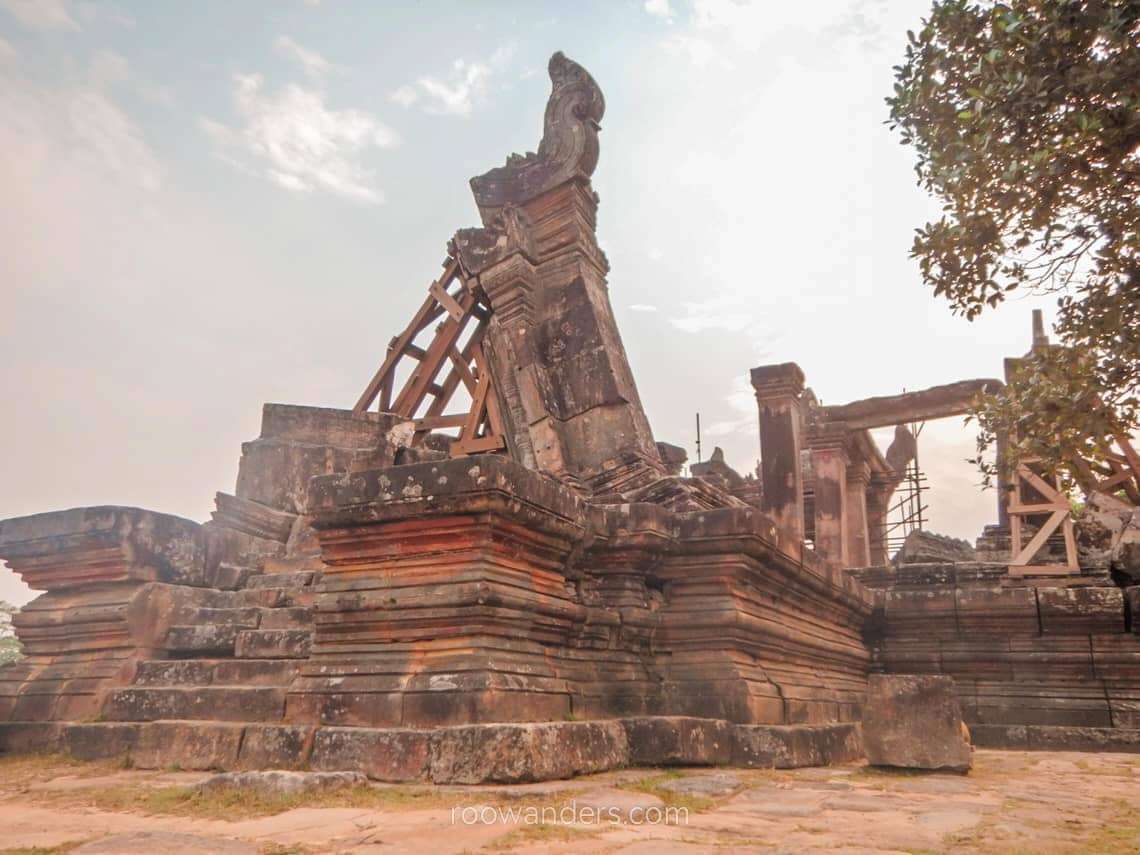
Prasat Preah Vihear: UNESCO Mountain Temple
I first learnt about this temple from a friend living in Phnom Penh. What better way to know the places to visit in a country than to ask the locals?
Getting to Prasat Preah Vihear was challenging. Unlike Angkor Wat, which sits beside the Siem Reap airport, and Sambor Prei Kuk, which is an hour away from Kampong Thom, a rest stop between Siem Reap and Phnom Penh, Prasat Preah Vihear is close to the border of Thailand! Not many foreigners would have strayed that far from the usual spots.
My mission in Cambodia this time was to visit all the UNESCO World Heritage sites in the country. Don’t you agree this makes the backpacking trip a lot more fun to plan and anticipate?
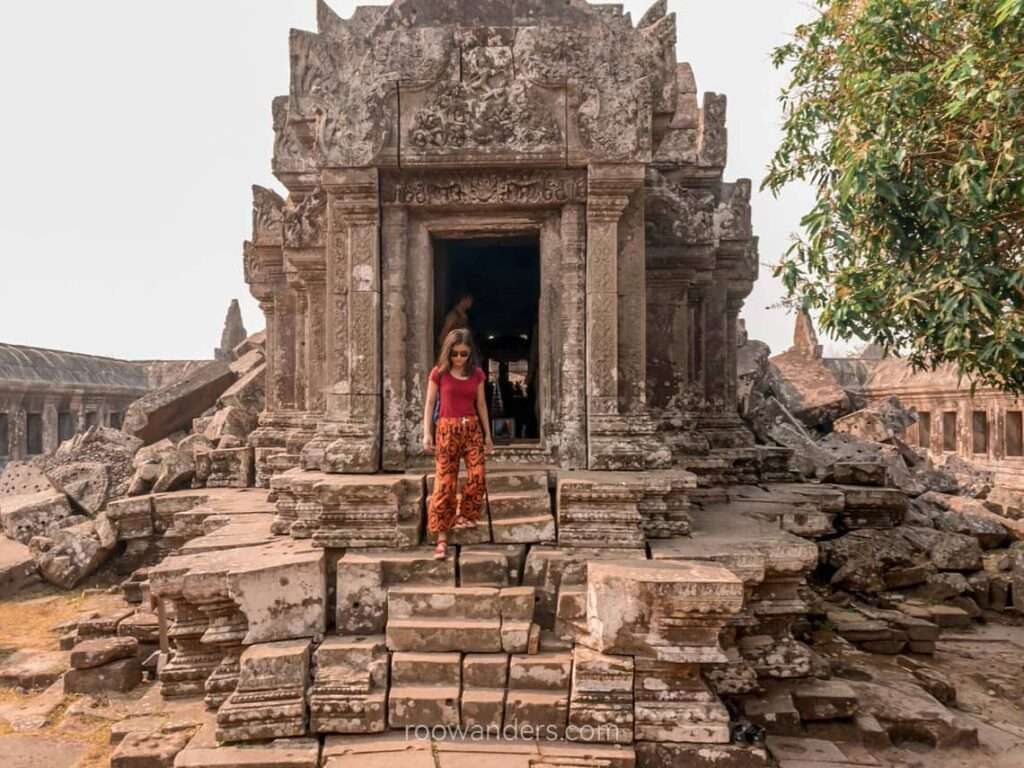
This post may be updated periodically.
The Temple on a Mountain
Prasat Preah Vihear or Preah Vihear Temple is not to be confused with the town having the same name 115 km away. The name of the temple comes before the town and its province.
Preah Vihear means ‘sacred sanctuary’ in Sanskrit.
Probably the most dramatic of all Angkorian monuments, Prasat Preah Vihear sprawls along the clifftop of Dângrêk Mountain, near the Thai border. You could recognise the proximity by noticing a Thai flag fluttering on the opposite mountain. As with your telco signal as you edge closer to the border.
Construction began under King Yasovarmamn I aka the Leper King and lasted for three centuries and over seven monarchs until the stewardship of King Suryavarman II in the 12th century. As with other temple mountains of its era, Prasat Preah Vihear was designed to represent Mt Meru – reminded me of Mahameru in Indonesia! – and dedicated to Lord Shiva.
The temple has been a source of tension between Thailand and Cambodia for years. It was initially under Thailand until the French protectorate directed it as Cambodia’s under the Franco-Siamese Treaty of 1907. But clashes still happen from time to time. The most recent clash was in 2011 when armed confrontations claimed the lives of several soldiers and civilians from both sides.
Unlike the other Khmer temples that are constructed on the east-west orientation (Hindu roots), Prasat Preah Vihear follows the conformity of the land and faces the north. It has five cruciform gopuras (gates), lavishly decorated with intricate carvings, and a causeway that spreads over 275 m long.
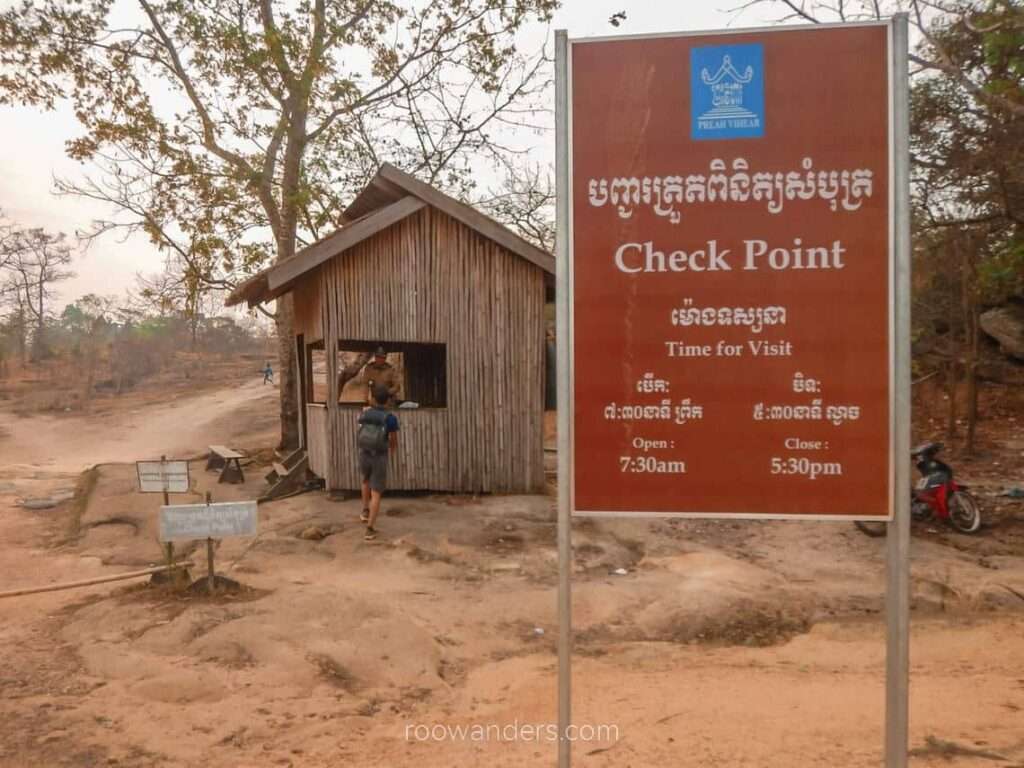
Getting There
From Siem Reap. It takes three hours by car from Siem Reap and could cost at least 200 USD for a private return journey. Tours are going for as low as 90 USD for a one-day trip to the temple and include side excursions to Koh Ker and Beng Melea.
From Sra’aem. This is the nearest town 30 km south of the temple. Recommended spending a night in Sra’aem before embarking on the journey north early next morning on rented motorbikes for 10 USD return each.
We took a bus from Kampong Thom to Sra’aem (8 USD one-way). Kampong Thom is the midway stop between Siem Reap and Phnom Penh and the gateway to Sambor Prei Kuk, the latest UNESCO site in Cambodia.
From Thailand. The border crossing to the temple has been closed since November 2014. While it may not be possible to visit the temple, for now, you can still see the temple from Khao Phra Wiharn National Park on the Thai side.
Visiting Hours and Ticket Prices
7.30 AM – 5.30 PM but note that the ticket counter closes by 4 PM.
It costs USD 10 to enter the temple, much like most other isolated temple complexes.
Unfortunately, motorbikes are unable to traverse the steep sections of the mountain. You need to pay for a jeep/ truck to complete the last section of the journey to the temple from the ticket counter.
- Motorbike return price from Sra’aem: USD 5
- Jeep/ truck return price (able to hold up to 6): USD 5 per person or USD 25 for 6
Alternatively, you could walk the 2,442 steps Preah Vihear staircase, which takes an average of two hours to complete. The steps were recently repaired in 2021.
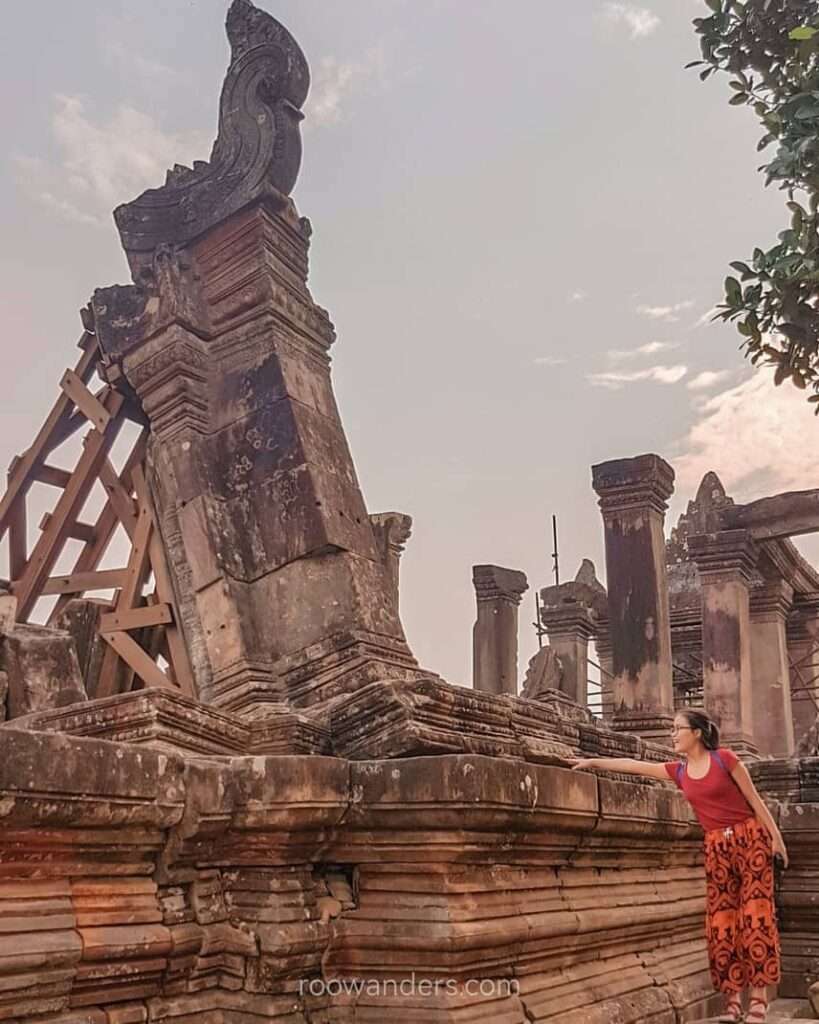
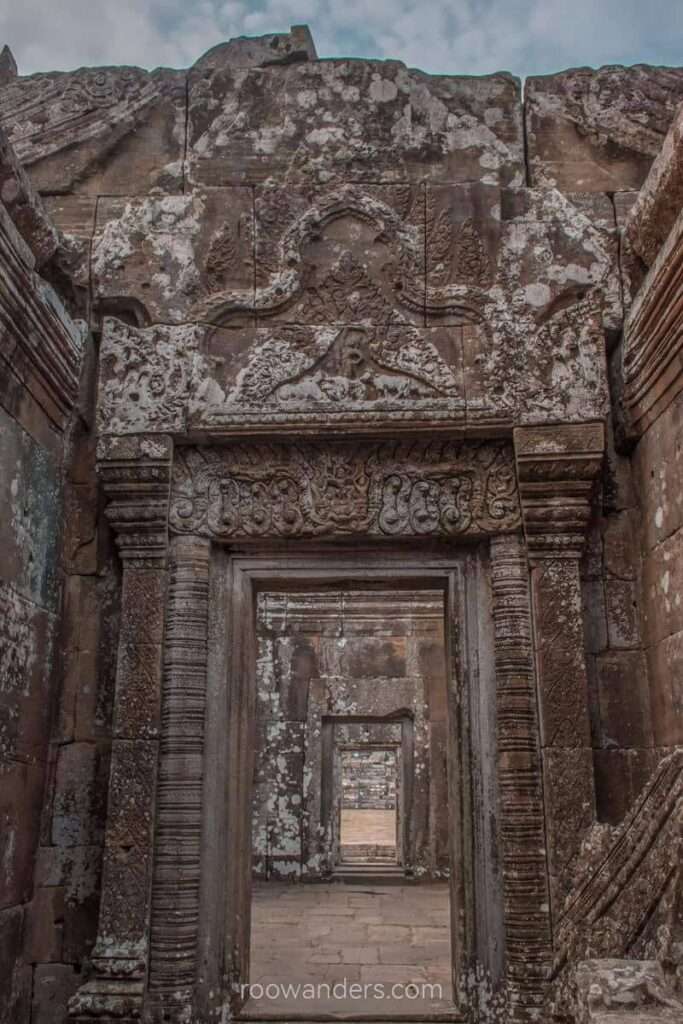
Accommodation in Sra’aem
Small village Sra’aem has nothing much to do and no fancy hotels – just a smattering of guesthouses with no online booking services but always available at very low rates.
After being dropped off at the roundabout in Sra’aem, pick any of the two roads, and you’ll see a guesthouse.
We stayed in Piseth Pich 2P Guesthouse, the first guesthouse from the street to your left, and paid USD 8 for a fan room with a hot shower. Very limited English was spoken here, but they were able to find our transport to Prasat Preah Vihear and back to Siem Reap.
The first guesthouse on the other street, Chhouk Tep Guesthouse, is a family-owned entity. We were able to converse with the boss in English and had a good time chatting. I would recommend this over 2P.
Our Visit
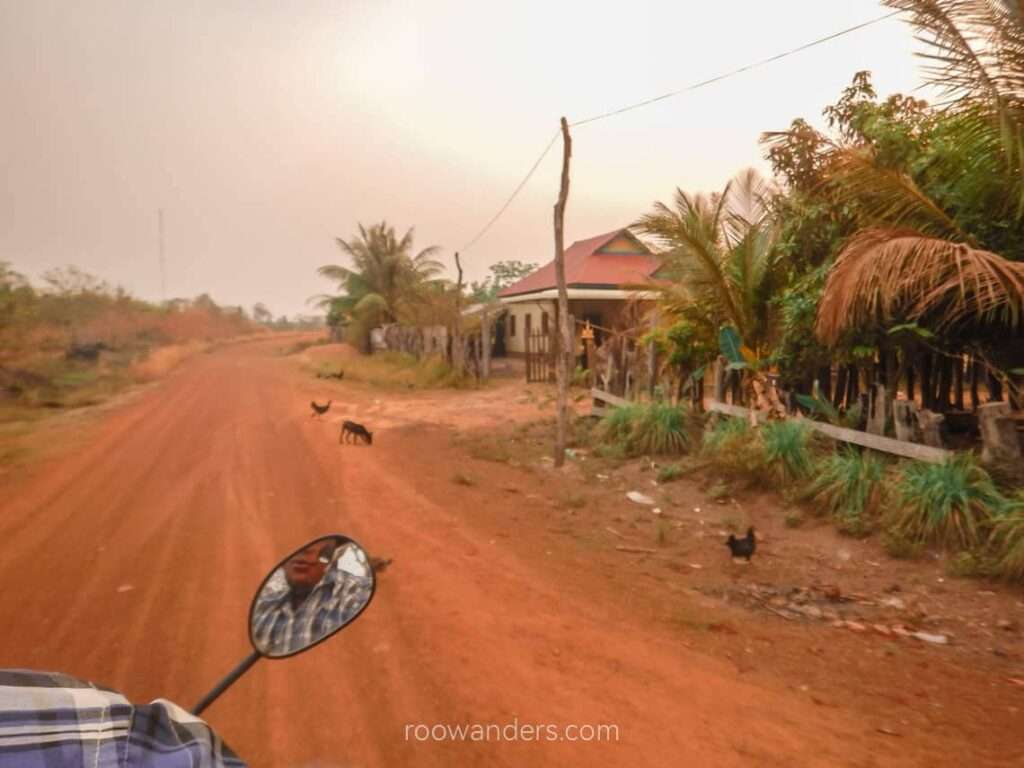
The 30 km ride from Sra’aem to the ticket counter was on a single highway that began as a dirt road ridden with potholes. We travelled in acrid air that stank of burnt trash and vegetation. The journey slowly transitioned into a smooth and clean tarmac road after we passed through a cluster of buildings.
Up the Mountain
We were the only visitors at the ticket counter – a dull grey concrete building with a bored woman seated behind a window. She asked for our passport before issuing the tickets and a receipt for the USD 5 return motor journey to the temple. The drivers were already on standby outside the counter.
Note: Remember the face or motor plate number of your driver!
It was an unnervingly steep climb up. I could feel the jeep shuddering under us while the driver switched gear to match the sharp inclination. Beside us were an unblocked bird’s eye visage of the forest and a few plumes of smoke swirling up towards the sky.
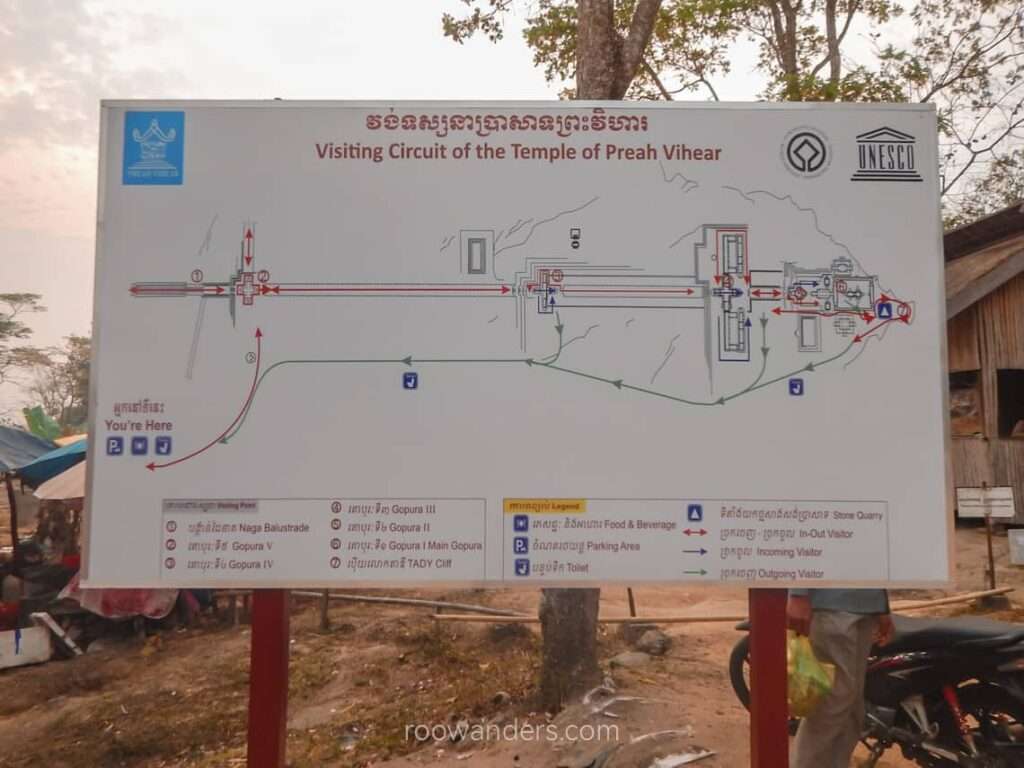
The Site and Its Gopuras
The driver dropped us beside the UNESCO World Heritage board with illustrations to recommend the circuit visitors should take in this massive temple. Around us were stalls selling snacks and drinks.
It took quite a bit of walking from the board before we reached the first gopura – a decrepit pile of stones supported with metal beams.
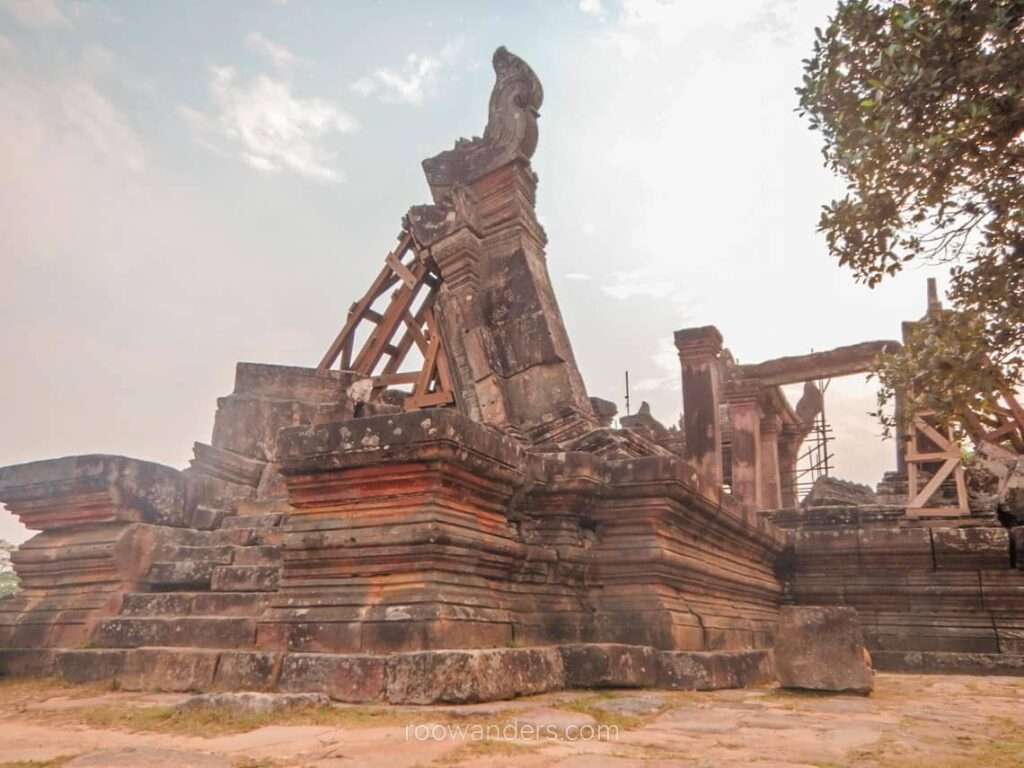
Between Gopura V (the first Gopura you’ll see) and Gopura IV was a long walk on concrete blocks. This gopura was structurally safe for visitors to wander within.
Just before reaching Gopura IV, we saw a dried reservoir on our left that probably serves the same function as those similar-looking ones in the Angkor complex – water for holy rituals.
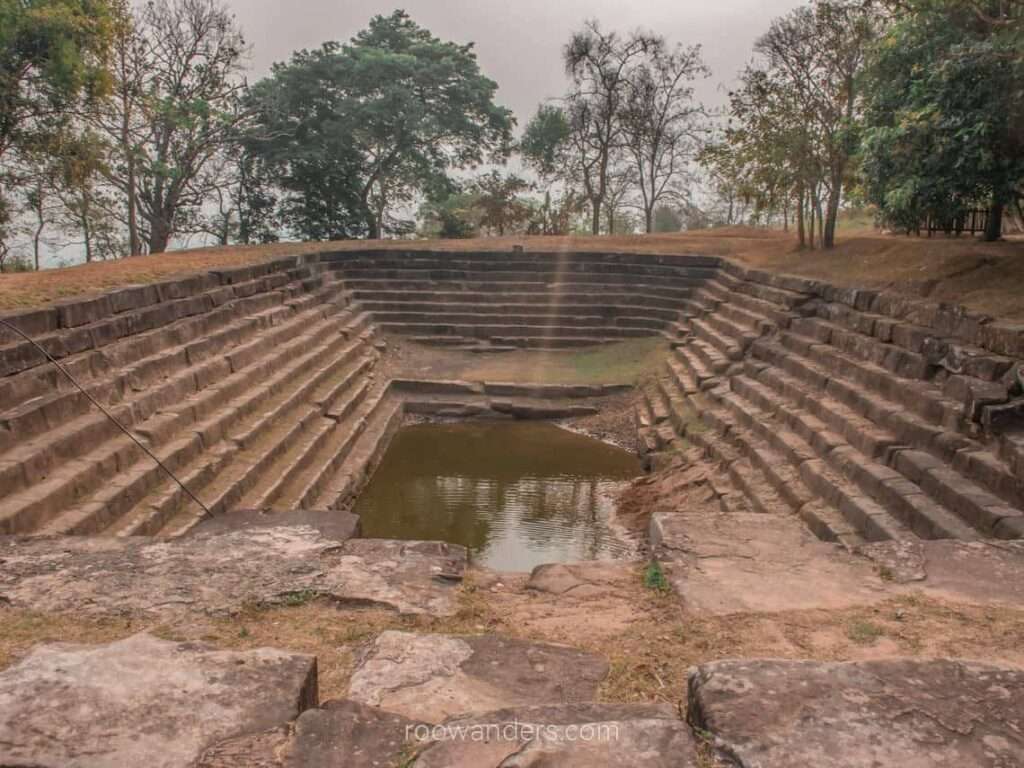
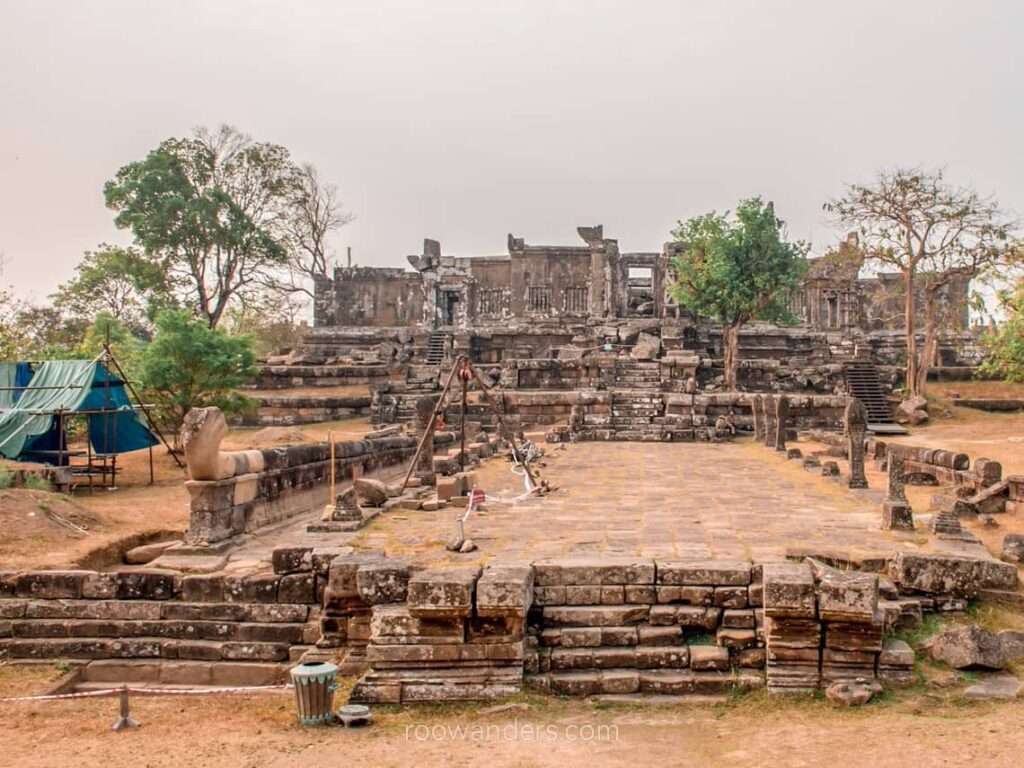
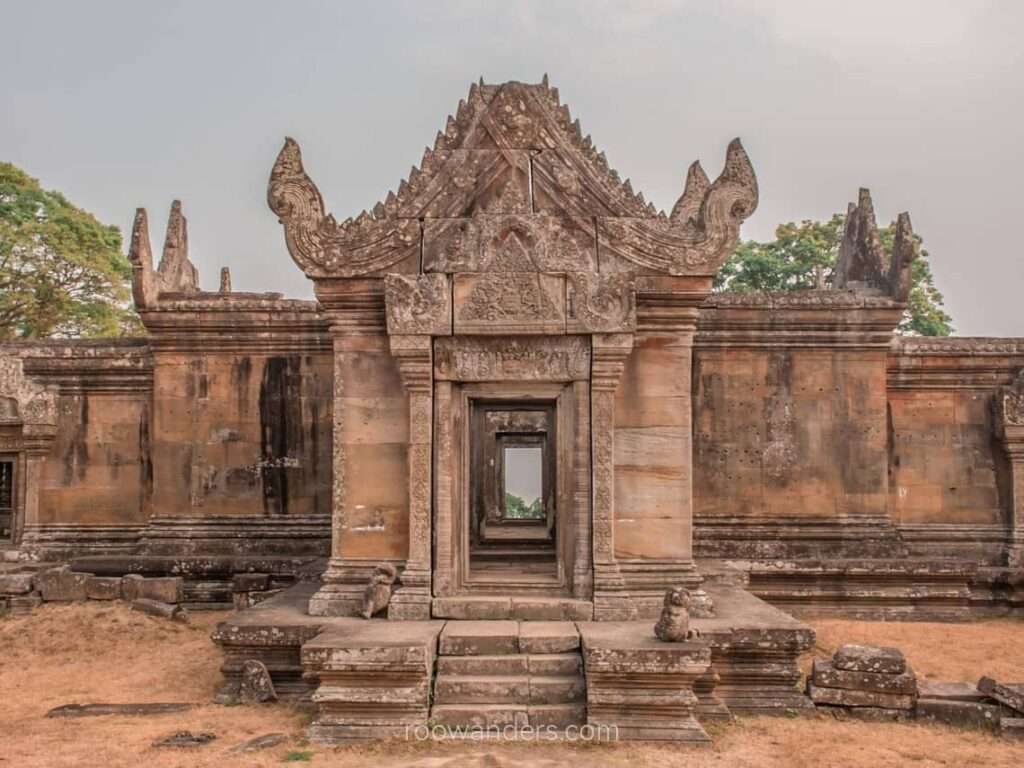
Getting to Gopura III requires ascending wooden stairs. A few uniformed officers were patrolling around the temple, and some women peddlers with drinks and mangoes set out under the trees.
Gopura II was like a huge symmetrical wall with the majority of the details clustered in the middle where the entrance into the main structure is.
A golden Buddha sits within the last gopura – Gopura I – with cotton mats on the floor for worshippers to pray. Two monks were chanting when we were there. Shoes are off in this active temple.
The visit does not end with the last gopura. Another gate opens to the edge of the mountain facing Thailand.
We were out of the complex by 10 AM, just when the first group of visitors from Siem Reap started streaming in.
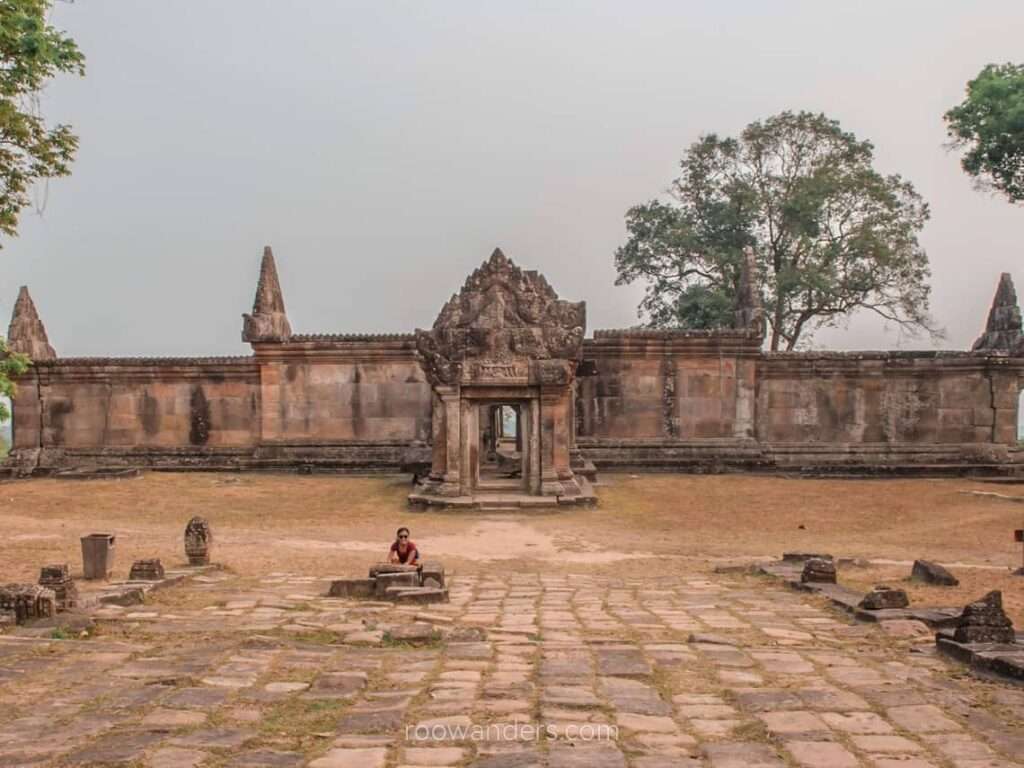
Pointers to Note!
- Sunscreen, hats and sunglasses. It was bright and warm in the early morning of our visit. It gets worse as the day goes on.
- Hydration. Bring yours or support the peddlers in the complex.
- Passport. Required to purchase the ticket.
- Mind your attire. This is a temple, don’t be rude and strut around in revealing clothes.
- Remember your driver. Especially when it gets crowded in the vicinity.
- Watch over your belongings. Beware the pesky monkeys beyond Gopura I.





